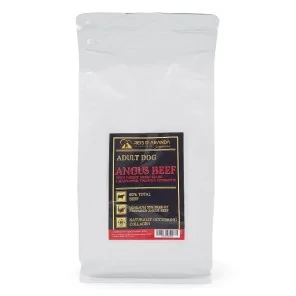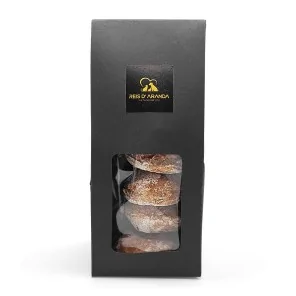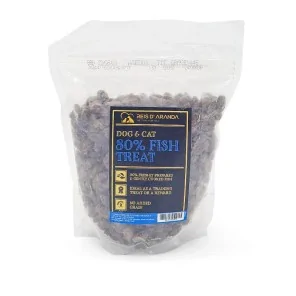The Tornjak originated from genetically homogeneous, almost extinct, indigenous shepherd dogs. These dogs have...
THE GERMAN PINSCHER
INTRODUCTION
This breed, related to the Schnauzer and whose origins date back to the 15th century, is a medium sized dog, 45 to 50 cm, proud and strongly muscled, weighing 14 to 20 kg, used by farmers in Germany to control rodent pests.
THE HISTORY OF THE GERMAN PINSCHER
The German Pinscher is a breed originally developed for farm husbandry. Its official history begins in the late 1800's, and is believed to be the result of a cross between guard dogs and European shepherds. The Pinscher Buzzard is often referred to as the forerunner breed, some doubt this, as it was considered extinct in the early 19th century.
In German, ‘pinscher’ means ‘to bite’, which was the main function of the buzzard. His quick and agile movements, his hunting instinct and his incombustible energy made him indispensable in German country houses.
Originally the German Pinscher and the Schnauzer were considered the same breed. The German Pinscher, with its soft, elegant coat, was considered the short-haired version of the Schnauzer, which has a rougher, coarser coat. Both were registered in Germany in 1885.
At the beginning of the 20th century the breeds were distinguished and the present Schnauzer was established. The German Pinscher, in turn, would contribute to the development of the Doberman Pinscher and its miniature variants - something which can be seen in the close resemblance of all of them.
World War II seriously affected the population of many dog breeds, and the German Pinscher was not immune. In fact, in the 1950's no litters were registered in West Germany even though the breed was registered by the FCI in 1955.
In 1958, a man named Werner Jung became the champion of the breed when he managed to bring a German Pinscher from West Germany to East Germany, where he succeeded in reviving it by crossing it with 4 miniature Pinschers that were too large for the desired breed standards.
Over the next decades, the breed spread throughout Europe, and by 1980 it was being exported to the United States, and in 1955 it was recognised by the American Kennel Club.
However, despite being rescued from obscurity, it is a less common breed than the Schnauzer. Often confused with the Doberman Pinscher or the Miniature Pinscher, the German Pinscher still claims to be the ancestor of these other breeds.
THE GERMAN PINSCHER STANDARD
GENERAL APPEARANCE: The German Pinscher is short haired, smooth, medium sized, with a proud stance, with a flowing outline, elegant and squarely built. He is strong like the Schnauzer and his well developed musculature is clearly evident during movement due to his short, smooth coat.
IMPORTANT PROPORTIONS:
- The build should appear as square as possible in relation to the length of the body and the height at withers.
- The total length of the head (from the tip of the nose to the occipital protuberance) should be in a ratio of 1:2 to the length of the body (from the withers to the insertion of the tail).
HEAD
CRANIAL REGION
SKULL : Strong and elongated, with the occiput not very pronounced. The occiput should not be too pronounced; the forehead is flat and parallel with the bridge of the nose.
STOP: Soft, but clearly marked.
FACIAL REGION
TRUFFLE: Well developed and always black.
HOCIO: Ending in a truncated wedge. The nasal bridge is straight.
BELLY: Black, resting firm and flat on the jaws; the corners of the mouth are closed.
JAWS / TEETH: Upper and lower jaw powerful. The bite is scissor bite, strong and complete (42 clean, white teeth in accordance with the dental formula of dogs). They should close well. The chewing musculature is strongly developed without forming disturbing cheeks.
EYES: Dark, oval with close fitting, black pigmented eyelids.
EARS: Folded and drooping, set on high, V-shaped; the inner edges of the ears rest on the cheeks. The ears are turned forward towards the temples. The parallel fold must not extend beyond the top line of the skull.
NECK: Of aristocratic carriage, not too short; unbroken, should flow harmoniously towards the withers; dry, without dewlap or loose throat skin. The skin of the throat is firm, without wrinkles.
BODY
TOPLINE: Sloping slightly from the withers towards the rear.
CROSS: Highest point of topline.
BACK: Strong, short, firm.
LOIN: Short, strong, deep. The distance from the last rib to the hip is short so that the dog appears compact.
Croup: Slightly rounded, imperceptibly towards tail set on.
CHEST : Moderately broad, oval in shape, deep to the elbows. The forechest is especially marked by the point of the sternum.
BOTTOM LINE : Flanks not excessively tucked up so as to give a nice wavy line to the underside of the chest.
TAIL: Natural, the aim being to achieve a sabre or sickle shape.
LIMBS :
FOREQUARTERS: Seen from the front, the forelegs are strong, straight and not too close together. The forearms seen from the side are straight.
Shoulders: The shoulder blade rests firmly on the thorax. Well muscled on both sides of the spine of the bone, protruding over the vertebrae of the spine in the thoracic region. As far back as possible and well laid back, forming an angle of 50° to the horizontal.
ARM: Close to the body, strong and muscular, forming an angle of approximately 95° to 105° to the shoulder blade.
ELBOW: Close fitting, turning neither in nor out.
FOREARM: Straight seen from the front and profile; strongly developed and well muscled.
BODY: Strong and stable.
Pastern: Strong and slightly springy, seen from the front straight, slightly oblique in profile in relation to the ground.
HANDS: Short and round, toes close together and arched (cat feet), strong pads, nails short, black and strong.
HINDQUARTERS : Seen obliquely in profile, from behind, parallel and not too close together.
Upper thigh: Moderately long, broad and strongly muscled.
KNEE: Should be turned neither in nor out.
LEG: Long and strong, sinewy, continuing into a powerful tarsus.
HIP: Well angulated, strong, firm, turning neither in nor out.
METATARSUS: Perpendicular to the ground.
FEET: Slightly longer than the forefeet. Toes tight to each other and arched; nails short and black.
GAIT / MOVEMENT: The German Pinscher is a trotter. During movement the back remains firm and relatively still. The onset of movement is harmonious, sure-footed, powerful, free and with good reach. In trotters it is typical to have great ground coverage with a clean, flowing movement, with a powerful drive and a wide front extension.
SKIN: Firm all over.
HAIR: Short and dense, glossy and close fitting to the body, without bald patches.
COLOUR :
- SOLID: Deer red, red-brown to dark red-brown.
- BLACK AND FIRE: Black lacquer coat with red to brown tan markings. It is desirable that the markings are as dark, saturated and well defined as possible. The tan markings are located: over the eyes, on the underside of the neck, on the pasterns, on the feet, on the inner sides of the hind legs and on the perineum. On the forechest, two triangles of equal size clearly separated from each other.
SIZE AND WEIGHT :
HEIGHT AT CRUIS: 45 to 50 cm.
WEIGHT : From 14 to 20 kg.
FAULTS : Any departure from the foregoing points should be considered a fault and the seriousness with which the fault should be regarded should be in exact proportion to its degree and its effect upon the health and welfare of the dog.
In particular :
- Appearance heavy or light, short or patilargo.
- Heavy or round skull.
- Wrinkles on the forehead.
- Short, pointed or narrow muzzle.
- Pincer bite.
- Eyes light, too small or too large.
- Ears set too low or too long, ears carried differently from each other.
- Strongly protruding cheek bones.
- Loose throat skin.
- Back too long, tucked up or soft.
- Flat back.
- Drooping croup.
- Long feet.
- Ambling gait.
- High gait.
- Fine coat.
- Eel line, dark saddle, light coat.
- 1 cm above the upper height limit or 1 cm below the lower height limit.
SERIOUS FAULTS
- Lack of typicality of sex expression (e.g. male female).
- Light in appearance.
- Lack of parallelism between skull and muzzle.
- Elbows turned outwards.
- Hindquarters not sufficiently angulated or barrel-shaped.
- Hocks turned inwards.
- Deviation between 1 and 3 cm above the upper or lower height limit.
ELIMINATION FAULTS
- Shyness, aggressiveness, viciousness, exaggerated suspicion, nervous behaviour.
- Deformity of any kind.
- Markedly reversed sexual characteristics.
- Faulty bite, overshot or undershot bite, deviated incisor arches.
- Gross faults in every region such as defects of construction, hair and colour.
- Deviation of more than 3 cm from the upper and lower height limits.
Any dog showing clear signs of physical or behavioural abnormalities should be disqualified.
NB : Male dogs should have two apparently normal appearing testicles fully descended into the scrotum.
THE HEALTH OF THE GERMAN PINSCHER
The German Pinscher generally boasts very good health. However, it does have some congenital diseases which are important to be aware of.
One of the most common and worrying diseases of the German Pinscher is von Willebrand's disease. It affects the blood system and causes the haematological coagulation to be disturbed. It is detected when one witnesses bleeding gums, nosebleeds, the appearance of bruises for no apparent reason or blood in the urine.
Hip dysplasia and cataracts are also common.
THE PERSONALITY OF THE GERMAN PINSCHER
High temperament, liveliness, self-confidence, mental balance and intelligent prudence coupled with perseverance make him an excellent family, guard and companion dog.
CONCLUSION
The German Pinscher adores his master. He loves cuddles and needs a lot of attention. Full of temperament, he demands to be kept busy. This active four-legged friend needs to live his play instinct and enjoys long walks. He likes to run around in the open air and chase mice in the countryside. He has great stamina and is suitable as a companion dog for sporting people.
Leave a comment
Log in to post comments
















